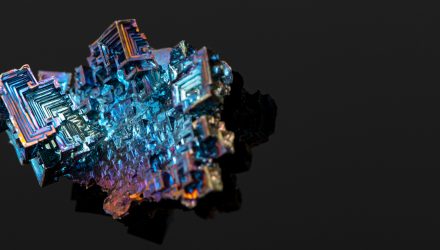With commodity prices rising to atmospheric levels amid Russia’s invasion of Ukraine, one area that’s seeing a supply crunch is rare earth metals. This is going to push these metals higher, giving investors an opportunity to capitalize on rising prices to hedge inflation.
Russia and Ukraine combined comprise a significant share of the rare earth metals market. With Western sanctions raining heavily on Russia, the constriction of supply will only get worse before it gets better.
“From gold to palladium – the rare-earth metals industry across both countries and across the world are likely in for rough weather,” an Engineering and Technology article says. “Meeting 45 per cent of global palladium supply, Russia is likely to face significant pressure with the already struggling industry, where demand has outstripped supply.”
“Furthermore, curbs on air transport since the genesis of the conflict have further heightened difficulties for palladium manufacturers,” the article adds. “Globally, palladium is being increasingly used for producing vehicle catalytic converters, designed to reduce noxious emissions for petroleum or diesel-fuelled engines.”
1 ETF for Rare Earth Metals Exposure
For rare earth metals exposure, one fund to consider is the Global X Disruptive Materials ETF (DMAT). The fund seeks to provide investment results that correspond generally to the price and yield performance of the Solactive Disruptive Materials Index.
The fund seeks to invest in companies producing metals and other raw materials that are essential to the expansion of disruptive technologies, such as lithium batteries, solar panels, wind turbines, fuel cells, robotics, and 3D printers. Targeted materials include companies involved in the exploration, mining, production and/or enhancement of rare earth materials, zinc, palladium, platinum, nickel, manganese, lithium, graphene, graphite, copper, cobalt, and carbon fiber.
Overall, DMAT gives investors:
- High growth potential: Forecasts suggest the global rare earth elements market could more than double between 2020 and 2028 (from $2.2 billion to $5.5 billion), highlighting one of several growth opportunities among the categories that DMAT invests in.
- Structural tailwinds: DMAT provides exposure to materials that are core to powering disruptive innovations, leading to potentially greener and more efficient transportation, energy, and manufacturing systems.
- Unconstrained approach: The universe of companies involved in the supply of disruptive materials defies traditional categorization. DMAT invests accordingly, with global exposure across multiple sectors and industries.
For more news, information, and strategy, visit the Thematic Investing Channel.

